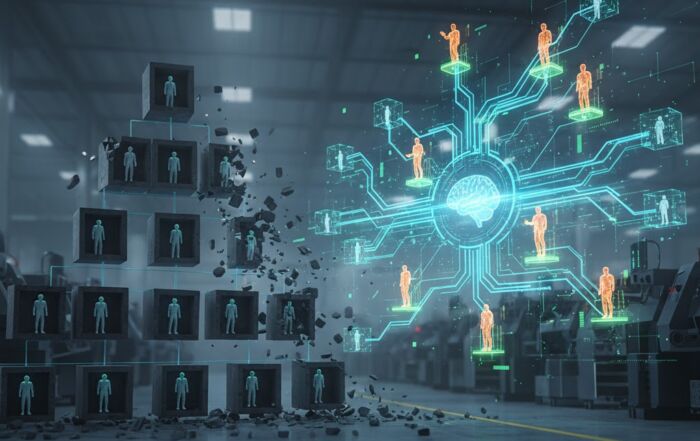Share
Author
George Anderson
Share
Manufacturers desperately need distributor portals. Supply chain disruption and rising digital expectations have made self-service portals essential. This is especially true as manufacturers push to retire phone, fax, and email interaction with distributors.
Yet when manufacturers look at digital solutions, they don’t always find what they’re looking for. There are plenty of options in B2B eCommerce—but that’s not necessarily the same thing as a distributor portal. The two functions can overlap, but not every organization needs the eCommerce component.
This challenge leads manufacturers to evaluate custom solutions. Yet while a custom approach may be justified in outlying use cases, it usually creates too much heavy lifting for the organization.
If you’re considering a custom distributor portal, here are 3 things to weigh carefully.
1. Complexity
When manufacturers look at a custom portal for distributors, two kinds of complexity show up: business processes, and technology.
Complicated business processes are usually unavoidable. Your interactions with distributors are complex, and the SAP logic governing transactions is complex as well. If your distributor portal can’t handle this level of sophistication, it’s not doing its job.
The other kind of complexity is technological. The solution you choose should be sophisticated enough to handle those business processes–but it shouldn’t introduce unnecessary complexity. This leads to technical debt.
At this point, the features and functionality of a distributor portal aren’t groundbreaking. (Dynamic SAP reports in the Corevist Platform might be an exception, but we digress!) Things like order tracking and status, payment history, even the ability to place orders by SKU—all this has been built before. While you can hire developers to build this type of functionality for you, that investment is difficult to justify when out-of-the-box solutions offer so much already.
It gets more complicated if you need SAP ERP integration. If you have things like customer-specific pricing and inventory calculations, complex product rules, or multiple ship-from locations, then your distributor portal should reflect that SAP data and conform to that SAP logic. You can use a third-party connector to sync your custom distributor portal with SAP, but that introduces significant staffing requirements, as the three systems (distributor portal, connector, and SAP) must be kept synchronized and working in harmony.
Which leads us to our second caveat: the expense of a custom solution.
2. Expense
If you’re building a custom portal for distributors, one thing’s for sure: You won’t be able to leverage the value of a multi-tenant SaaS approach. By definition, a solution that’s truly custom will require an on-premises model or single-tenant cloud approach. Both of these will cost far more than a prebuilt, multi-tenant SaaS solution, both in the project phase, and after GoLive.
SAP ERP integration adds another layer of expense here. If you use a third-party connector or middleware between your distributor portal and SAP, the licensing and support for this system can turn into a significant line item. Far too many manufacturers come to us having gone down this road. When they throw in the towel, it’s usually because the complexity of the bolt-on SAP integration grew beyond what their IT team could maintain.
Ultimately, the constraint to a custom portal is your staffing capabilities. Custom solutions simply cost more to design, build, and support. There’s no knowledge base or expert community outside your organization that knows the solution. Your staff has to own all that knowledge.
In a nutshell, custom distributor portals create more long-term risk.
3. Long-term risk
Complexity and expense are two sides of the same coin. Ultimately, the more complex and expensive your portal is, the more long-term risk you take on.
Consider these questions.
- What happens if your third-party SAP connector becomes end-of-life?
- What happens if your internal documentation on the portal isn’t complete, and the expert employees leave the company?
- What happens to your custom integrated portal when/if you migrate to S/4HANA? (Hint: the Corevist Platform follows you from ECC to S/4HANA.)
- What happens if your SAP configuration evolves faster than your ability to reconfigure your connector and your portal?
There’s no way around it: A custom distributor portal will increase your technical debt. And you can’t forecast that technical debt ahead of time.
Some organizations can justify the growing expense of a custom solution. Maybe they have a highly specific use case—and they have the IT resources on staff to take full ownership of that custom solution.
Other manufacturers struggle to support their homegrown solutions. In fact, our client Emmerson Packaging found themselves in this exact situation. Their DIY customer portal became unsupportable when Emmerson needed to migrate to a more advanced ERP system. Read more here: How Carey L. Delighted Customers And Gave Reps A Lighter Load.
The alternative: Prebuilt, integrated solution
If you can’t justify a custom distributor portal, what other options do you have?
The key here is to look for a prebuilt SaaS solution that includes SAP ERP integration. This approach allows you to stand up a distributor portal quickly, with all your SAP complexity automatically honored in the portal. If it’s a managed SaaS solution, you get all this without needing to hire more IT staff—which allows you to focus on your core business.
That’s the thinking behind the Corevist Platform.
Want to become Easier To Do Business With?
Check out the Corevist Platform.
Managed B2B portals and eCommerce with prebuilt integration for ECC and S/4HANA.










